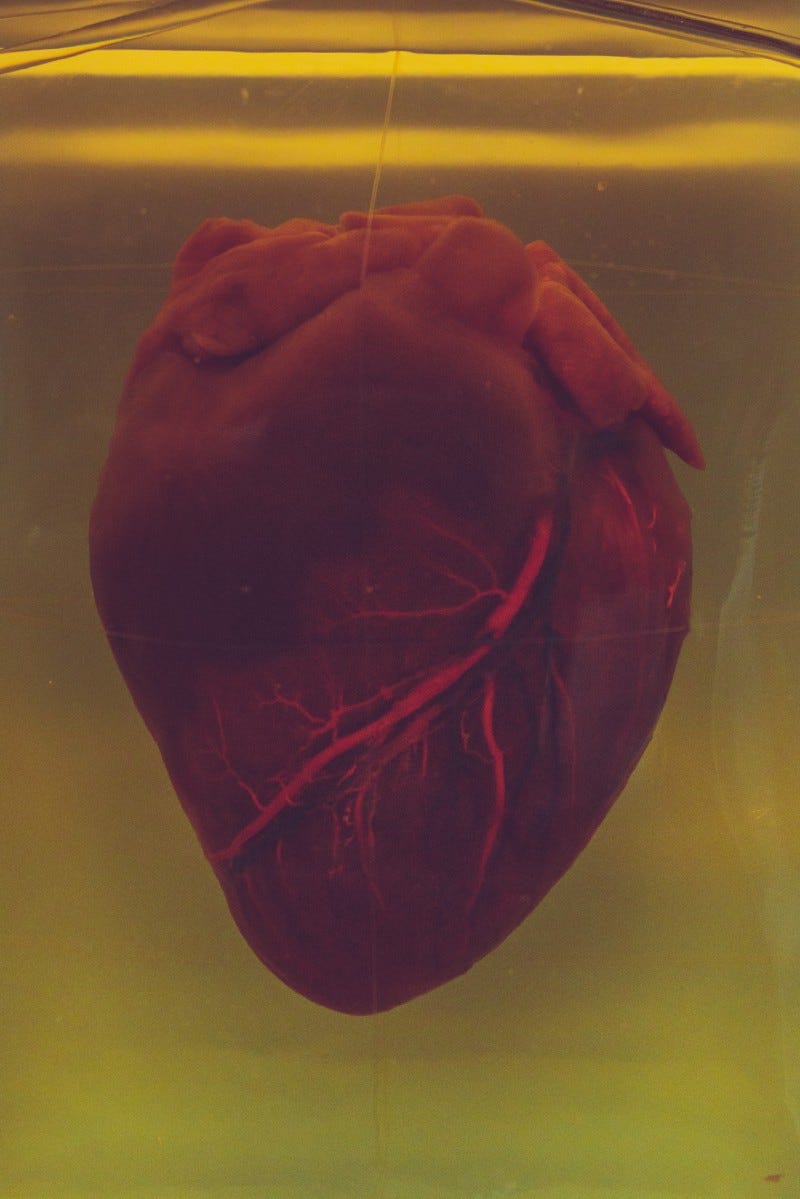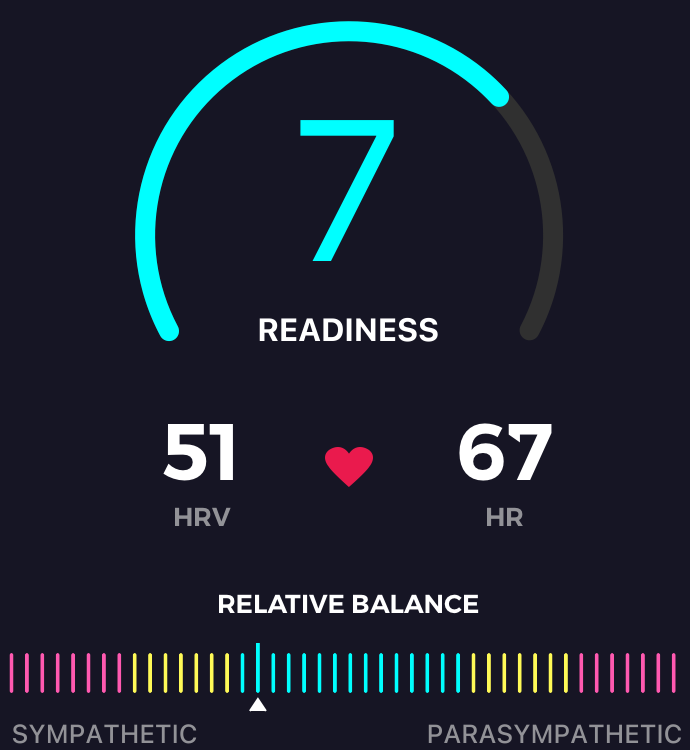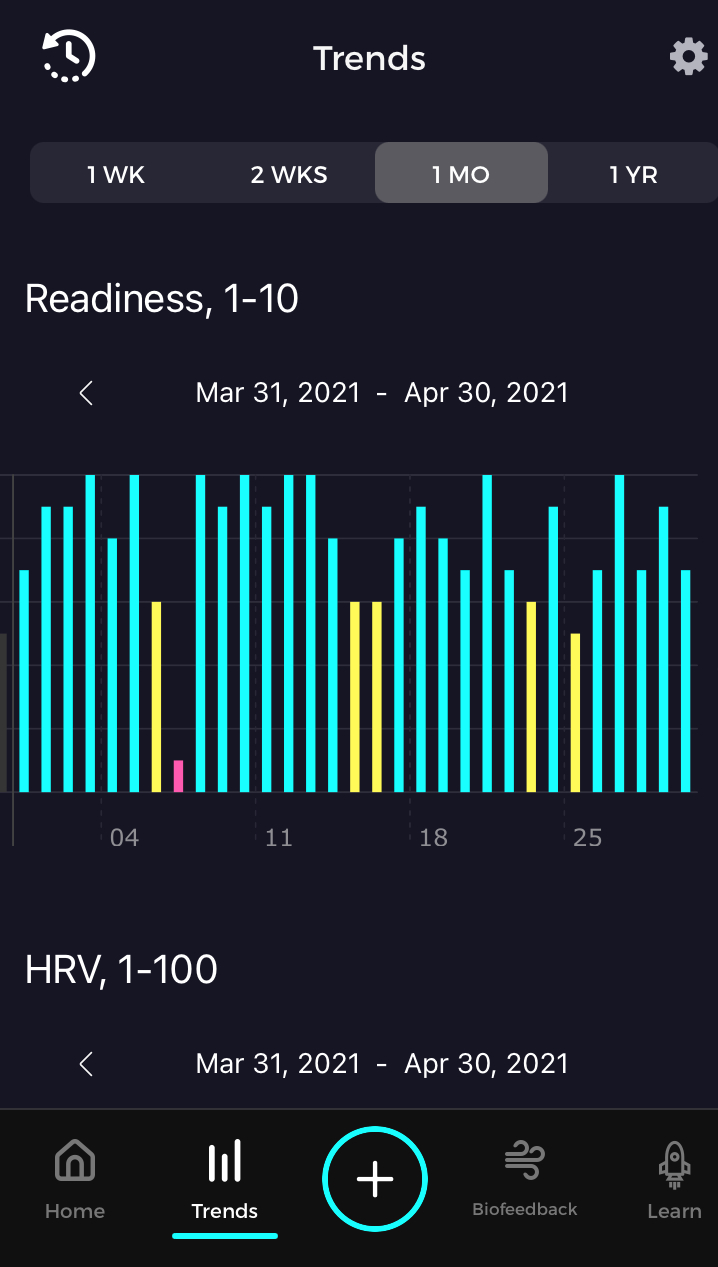What Is HRV?
Not to be confused with your heart rate, HRV is a measurement of the time between individual heartbeats. This biomarker indicates how your Autonomic Nervous System (ANS) is functioning. We won’t get bogged down in all the details here, but suffice it to say there is a goldmine of data that can be gathered by reading your HRV.
Your ANS can be broken down into the Sympathetic Nervous System (SNS) and Parasympathetic Nervous System (PSNS). Your SNS triggers the ‘fight or flight’ response to a stressful situation. Elevated SNS activity leads to increased heart rate, stimulates the release of blood glucose for quick energy and pupil dilation, and slows digestion to conserve energy. The SNS doesn’t just respond to physical stress like exercise. Emotional stress, like running late for a meeting, can also cause this response. Unfortunately, many people in Western society have chronically elevated SNS activity due to the stressors of modern-day living that our ancestors thousands of years ago didn’t have to worry about.
The PSNS is the ‘rest and digest’ branch of the ANS and aids in recovery. Physical responses to PSNS activity are decreased heart rate, conservation of energy, increase in digestion, and constriction of the pupils. That tired feeling you get after having a big meal is your PSNS kicking into action and telling you to take it easy so you can digest your food.
In a perfect world, the activity of your PNS and PSNS would be balanced, but I’ve yet to meet anyone who resides in such an ideal place. Until then, HRV training can be a tool to help measure the push and pull the ANS and PSNS have on each other. Consistent measurement of HRV gives you insight into how your ANS is performing and can help guide you in making decisions on when and how hard to train.
Why This Matters To You
Having chronically elevated SNS activity, which is by far the most common issue, can lead to a host of adverse outcomes when this stress goes unchecked. Detriments include:
Increased risk and progression of diseases like diabetes and heart disease
Mental health disorders such as depression and anxiety
Increased risk of injury
Decrease in physical performance, especially among athletes
How To Use HRV
The picture above is my morning readiness reading. This gives me an HRV score on a scale of 1 to 100 and a readiness score of 1 to 10 on how prepared my body is to take on the day. This also indicates if I’m leaning sympathetic or parasympathetic. I take a reading every morning as soon as I wake up, as getting a resting reading is the most accurate. I’ve tracked my HRV every morning for almost 100 days now. The data is saved and can be viewed in a graph over time, like the picture below.
As you can see, most days are blue, so I’m good to go and train and play hard. Yellow indicates a medium score, which means you shouldn’t train too vigorously and include some practices to induce recovery. Red means you’re ANS is way out of balance, and you prioritize rest and recovery, which leads us nicely to another use of HRV, biofeedback.
HRV Biofeedback Training
Biofeedback training is an excellent tool not only to help with recovery but also to train your nervous system to be more resilient. Improved resilience enables your PNS to better handle and recover from stressors of all types. Consistent biofeedback training increases your HRV over the long term and enhances the physical and mental variables mentioned at the beginning of the article.
Performing a biofeedback session is simple. I place my CorSense monitor over my finger, select the breathing practice I want, and start. I typically go with resonance breathing, which consists of a four-second inhale and a six-second exhale. My HRV and heart rate are continuously monitored and displayed throughout the session, which I usually do for 10 minutes. This is a potent tool, and I knew after the first session I completed it would be beneficial for me. It’s like meditation in that you are focused on the breath. The long breaths and slow pace stimulate the vagal nerve, which induces a parasympathetic response. I feel great every time I complete a session, and the consistent training has indeed caused my HRV to increase over time. I prefer biofeedback more than traditional meditation practices because the ability to see your HRV in real-time gives you a goal to aim for. When I attempted to meditate, I could focus on my breath only for a few minutes before my thoughts wandered off into the desert of my mind.
To conclude, HRV is slowly making headway into the hands of health-conscious consumers. If you already track your sleep and physical activity, consider HRV as another tool to help build a more perfect body and mind.






